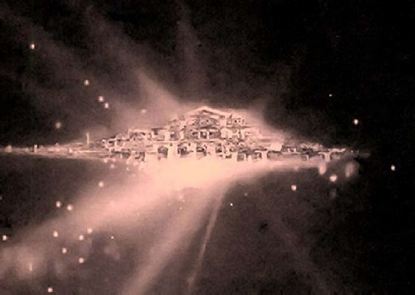По всем вопросам обращайтесь на: info@litportal.ru
(©) 2003-2025.
✖
SCIENCE AND TECHNOLOGY XXI: New Physica, Physics X.0 & Technology X.0
Настройки чтения
Размер шрифта
Высота строк
Поля
On the intuitive level, the idea of convertibility/reversibility in nature completed with the concept of unity of natural forces was a guiding ontological principle in Faraday’s discovery of magnetic and electric effects.
If such is the case, many inverse effects are to be discovered under particular experimental conditions, thus giving new physical laws for new physical devices, technology systems, and machines performing the transformation of physical changes and energy (mechanical, thermal, electrical, magnetic, electromagnetic, nuclear) into each other.
Regardless their multitude and variety, all the existent and not yet uncovered physical effects are falling into one of a few physical processes, as it is briefly listed below:
• Mechanical processes relating mechanical changes, motions and forces;
• Quantum mechanical processes connecting quantum events;
• Thermal processes relating thermal changes;
• Electric processes converting electrical changes;
• Magnetic processes interrelating magnetic changes;
• Electromagnetic processes (radiation or waves) interconnecting electrical and magnetic fields;
• Mechanothermal processes generating the differences in temparature by mechanical stresses and the inverse, thermo-mechanical phenomena producing mechanical forces with temperature changes;
• Thermoelectric processes causing electricity with heat and electrothermal processes generating temperature change by electricity;
• Electro-magnetic processes generating magnetism by the action of electricity and magnetoelectric processes producing electricity by the operation of magnetic forces;
• Magneto-electromagnetic and electromagnetic-magnetic processes (including magneto-optical and optomagnetic processes) interrelating electromagnetic radiation and magnetism;
• Mechanoelectromagnetic processes (including quantum processes and electromagnetic-mechanical processes (with reversed quantum processes) determining the interrelationships of mechanical energy and electromagnetic radiation;
• Mechanoelectric processes (classical and quantum) and electromechanical processes where mechanical stresses generate electricity and vice versa when electricity effects mechanical phenomena;
• Mechanomagnetic processes and magnetomechanical processes (quantum and classical) interrelating mechanical forces and magnetc forces;
• Thermomagnetic and magnetothermal processes interrelating heat and magnetism;
• Thermoelectromagnetic and electromagnetothermal processes interconnecting radiaton and temperature change;
• Electro-electromagnetic and electromagneto-electrical interractions pertaining to conversion of radiation into electricity and converse phenomena, transforming electricity into electromagnetic waves.
Excluding chemical changes of substances and taking the standard case of binary force-relations, we obtain a rather exhaustive collection (network) of Natural Physical Forces, Processes, Effects and Applications, or Machines.
The mechanical forces, processes, effects and applications
The mechanical processes cover the mechanical effects ranging from the transformation of forces and motions to Hooke’s law (including nonlinear law) to nonlinear interaction of acoustic waves (e.g., effects of self-action, generation of nonlinear waves, and so on).
The most visible effects mechanical forces are deformation and flow, alteration in the form, shape or size of physical substances, as solids, liquids and gases.
Rigid, plastic or elastic deformations are caused by sudden or prolonged stress, strain, pressure, or forces, mechanical, gravitational, thermodynamic, magnetic, electric, electromagnetic forces.
Conversely, mechanical deformations lead to gravitational, mechanical, thermal, magnetic, electric, electromagnetic, or chemical effects, what is studied as separate effects, piezoelectricity, electristriction, magnetostriction, etc.
It is generally described by the symmetrical stress–energy tensor, stress–energy–momentum tensor or energy–momentum tensor, with the contravariant components of energy density and momentum density, momentum flux, sheer stress and pressure, reflecting the general reversibility mechanism. So, it makes a tensor quantity T
of order two representing the density and flux of energy and momentum in spacetime, generalizing the stress tensor of Newtonian physics. As such, it is a feature of matter, radiation, and non-gravitational force fields, the source of the gravitational field in the Einstein field equations of general relativity, like as mass density is the source of the gravitational field in Newtonian gravity..
Again, the mechanical laws of motion and equilibrium are aligned with the more general reversal law, especially, it is Newton’s third law for the two-body system: while two body interacts, there is an action and reaction couple of equal and opposite forces, each acting on a different body and never on the same body.
There are mechanical inertia measured by mass and provided by inertial forces. The resistive forces is opposing any agency and efficiency of motive force of mechanical momentum to continue in the rest or forceless or zero net force motion in a constant velocity.
The reversibility law is an ultimate generalization of the basic law of motion: to every action there is always a reaction, to every progressive process of action there is a retrogressive action in the most general physical sense and application.
Or, the mutual actions of physical systems must have both the direct or forward action of forces as well as a reverted or backward reaction of forces. And action and reaction force-relations might act instantly, like in mechanics, or in succession, or in most times reverse effects need special discovery under spatial physical conditions, sometimes as nonlinear natural phenomena.
The simplest application of mechanical force-relationship reversibility is the mechanical power/drive train which transmits motion (power) from the engine of a car to the driving wheels, and conversely from the driving wheels to the engine.
The engine itself is the key mechanical application, as a machine converting any of various forms of energy or forces into mechanical force, power or energy or motion.
There may be as many engines as types of force or energy:
steam engine,
jet engine,
rotary engine,
rocket engine,
heat engine,
diesel energy,
gasoline engine,
internal-combustion engine,
electric engine,
magnetic engine,
electromagnetic engine,
light engine,
plasma engine,
radiation engine,
gravity engine,
or quantum gravity engine.







